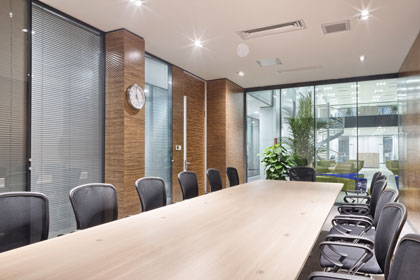Do you ever feel overwhelmed just by looking at your desk? Are you constantly searching for documents, cables, or even your favorite pen in the chaos of your workspace? If so, you’re not alone. According to a National Association of Professional Organizers study, 82% of people report feeling less productive in a cluttered environment. Even more striking, the average employee wastes up to 4.3 hours per week searching for papers, according to research from the Wall Street Journal.
These numbers reveal a common truth: a messy workspace isn’t just unsightly—it’s a silent productivity killer. In a world where remote work and hybrid schedules are increasingly common, maintaining a clean and efficient workspace is more important than ever. Beyond mere aesthetics, a tidy desk promotes focus, lowers stress, and helps you take control of your time and tasks.
This article’ll explore the key elements for achieving a tidy workspace—practical strategies and thoughtful habits that can transform your environment and supercharge your productivity.
1. Decluttering: The Foundation of Tidiness
Decluttering is the first and most crucial step toward creating a clean and organized workspace. Start by removing everything from your desk and sorting through items. Ask yourself: Do I really need this? Only the essentials should return to your desk. This includes tools you use daily, such as a computer, notebook, pen, phone, or planner.
Get rid of unnecessary paperwork, broken equipment, and outdated materials. If you’re unsure whether to toss something, consider the 90-day rule: if you haven’t used it in the last 90 days and don’t expect to in the next 90, it’s likely safe to remove.
2. Storage Solutions and Organization Systems
A tidy workspace needs a place for everything, and everything should be in its place. Invest in functional storage solutions like:
- Desk organizers for pens, sticky notes, and other office supplies.
- Filing cabinets or folders to manage physical documents.
- Cable organizers to manage cords and reduce visual clutter.
- Drawer dividers to keep small items grouped and accessible.
Using vertical space can also help. Shelves, wall-mounted file holders, and pegboards offer extra storage without taking up desk surface.
Digital organization is equally important. Create labeled folders for files on your computer, clean out your inbox regularly, and unsubscribe from newsletters or notifications you no longer need.
3. Cleanliness and Routine Maintenance
Tidiness goes beyond organization—it also includes cleanliness. Dust, coffee stains, and crumbs can accumulate quickly. Make it a habit to clean your workspace at least once a week. Keep a microfiber cloth, disinfecting wipes, and hand sanitizer nearby for quick cleanups. For a deeper clean, especially for intricate tools or electronic accessories, consider using a cutting-edge ultrasonic cleaner, which uses high-frequency sound waves to remove dirt and grime without damaging delicate components. Establish daily habits like:
- Wiping down your desk before and after work.
- Putting items back in their designated places at the end of the day.
- Managing trash and recycling promptly.
This consistent maintenance prevents mess from building up and makes tidying less overwhelming.
4. Minimalism in Design and Equipment
Adopting a minimalist approach reduces decision fatigue and keeps distractions at bay. Choose furniture and equipment that is both functional and visually clean. Avoid excessive décor—opt instead for a few meaningful or inspiring pieces, such as a framed quote or a plant.
Minimalism doesn’t mean your space must be sterile. It’s about intentional choices. Ask yourself whether each item on your desk adds value to your workday. If not, it might be time to let it go.
5. Ergonomics and Spatial Arrangement
Tidiness also involves how your workspace is arranged for comfort and efficiency. An ergonomic setup reduces strain and helps you work longer with better focus. Key tips include:
- Your monitor should be at eye level to prevent neck strain.
- Your chair should support your lower back.
- Your keyboard and mouse should be within easy reach.
- Leave enough space to move freely and stretch.
When your space is physically comfortable, you’re more likely to keep it organized and less likely to let clutter pile up.
6. Personalization with Purpose
While tidiness is key, a sterile, impersonal workspace can feel uninspiring. Personalize your space with intention. A photo of loved ones, a motivational quote, or a favorite coffee mug can bring joy and a sense of ownership, without turning your desk into a museum.
Be mindful not to overdo it. The goal is to find the balance between personalization and practicality. One or two personal items are usually enough to create warmth without creating a distraction.
7. Digital Decluttering
Just as physical clutter can crowd your space, digital clutter can overwhelm your mind. A tidy workspace includes a clean digital environment. Steps to achieve this include:
- Clearing your desktop screen of unnecessary icons.
- Organizing files into labeled folders.
- Deleting old or duplicate files.
- Closing unused browser tabs and applications.
- Using productivity tools like task managers and calendar apps to stay organized.
Consider setting aside 10 minutes weekly to tidy your digital workspace—it will make a noticeable difference.
8. Effective Use of Lighting
Lighting plays a major role in a workspace’s function and feel. Poor lighting can cause eye strain and make a space gloomy or chaotic. Natural light is ideal, so position your desk near a window. If not, invest in a quality desk lamp with adjustable brightness and color temperature.
A well-lit space feels cleaner and more welcoming, encouraging better maintenance and organization.
9. Mindful Work Habits
Tidiness isn’t just about physical space—it’s also about how you work. Mindful work habits contribute to a clutter-free environment. Some practices include:
- Single-tasking: Focusing on one task at a time reduces the spread of materials.
- Taking breaks: Stepping away helps you return with fresh eyes, more likely to tidy.
- End-of-day review: Spend 5–10 minutes wrapping up, filing documents, and resetting for tomorrow.
You naturally maintain a cleaner space by incorporating these habits into your routine.
10. Regular Audits and Reassessments
Even the best systems need occasional reevaluation. Schedule regular audits of your workspace—perhaps monthly or quarterly. Ask:
- What’s working?
- What’s not?
- Are there tools or papers accumulating again?
- Have your tasks or needs changed?
Revisiting your setup ensures it stays aligned with your current work and lifestyle, keeping clutter from creeping back in.
Conclusion
A tidy workspace doesn’t happen accidentally—it results from intentional effort, regular maintenance, and smart systems. From decluttering and organization to ergonomic design and digital cleanliness, each element fosters a productive, calm, and inspiring work environment.
The benefits are far-reaching: improved focus, better time management, reduced stress, and even a sense of pride in where you work. Ultimately, your workspace is a reflection of your mindset. By nurturing it, you nurture your potential for excellence.



